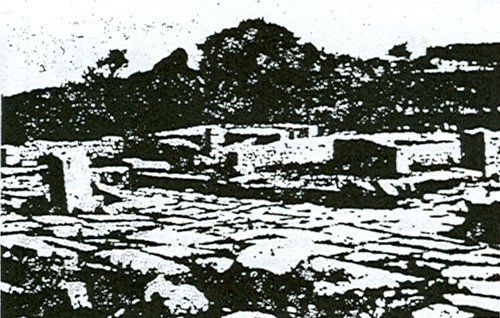(by Antonio Piccoli)
The occasion of new excavations at Juvanum, being carried out under the directorship of Professor Emanuela Fabbricotti, who holds the chair of Archaeology at the University of Chieti, has given the Association "Friends of Torricella" the idea of compiling, with consultation and guidance from Prof. Fabbricotti, an archaeological map of the zone, with photographs and historical titles, also inserting into the journey Palombaro, La Roma, Montenero, Pietrabbondande and thus all those places in which there are remains of Italic settlements from the same period as Juvanum.
The response was affirmative and everything was postponed for a future meeting of the organisation.
For now we wish to provide an extract of a publication by Prof. Fabbricotti published in 1983 entitled "The Site of Juvanum".
"On the hillside there are the remains of two Italic type temples and a
Cistercian monastery, that was built on the southern part (of the site)
probably in the 12th Century AD, causing serious damage to the
pre-existing temple structures, both because part of the monastery was built
on top of the southern temple and also because they reused materials that had come from the Acropolis, from the town of Juvanum, as
well as from its Necropolis; in fact the entire monastery is constructed
with reused stones, and not only with those coming from buildings (squared
blocks, thresholds, columns, etc.,) but in some walls memorial and boundary
stones with public and private inscriptions (funereal) were inserted.
materials that had come from the Acropolis, from the town of Juvanum, as
well as from its Necropolis; in fact the entire monastery is constructed
with reused stones, and not only with those coming from buildings (squared
blocks, thresholds, columns, etc.,) but in some walls memorial and boundary
stones with public and private inscriptions (funereal) were inserted.
The polygonal walls, dating at the latest to the beginning of the IIIrd Century BC, surrounded a place of worship that existed prior to the erection of the temples, maybe dedicated to the worship of water, given the proximity to the spring, although no connected votive pieces have been found, but test excavations have never been carried out. In any case, it would be difficult to find a little piece of land not disturbed by the monks or by the building of a small nineteenth Century farmhouse, whose inhabitants, perhaps following in the wake of what the Cistercians had done, amongst other things laid out a road on a small terrace close by the main part of the auditorium of the theatre, thus obliterating the southern part of the polygonal wall at the East of the hill".
© Amici di Torricella
Translation courtesy of Dr. Marion Apley Porreca